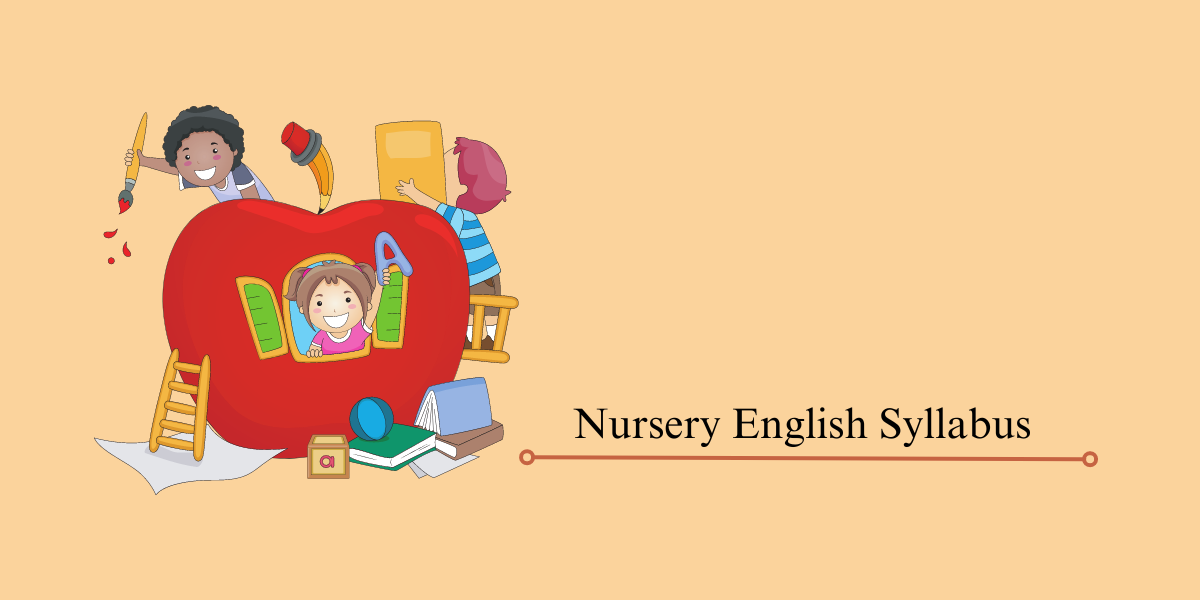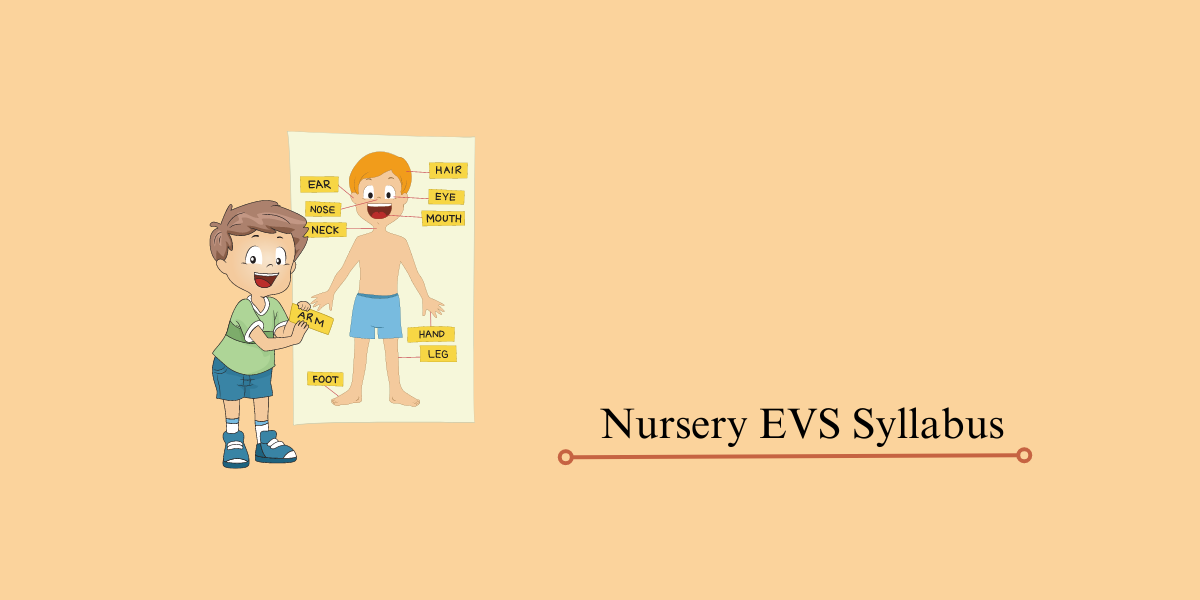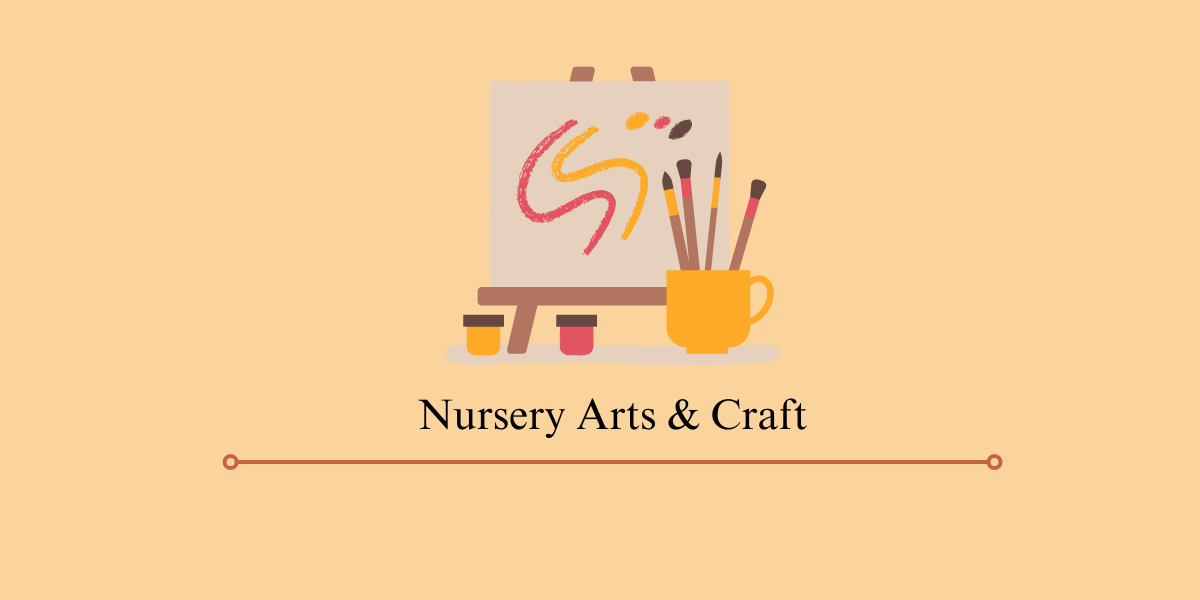We have curated the latest nursery syllabus which you can download for free in pdf and use it to create a study plan for your kid. This syllabus covers the latest curriculum and guidelines for nursery class by CBSE, ICSE and Cambridge board.

Focus points for nursery curriculum
- Development of interpersonal and linguistic skills
- Stimulating comprehension of basic mathematics
- Development of cognitive capabilities
- Enhancing motor skills
- Cultivating creative expression
Subjects covered under the nursery syllabus
Nursery syllabus for English

The syllabus nursery english covers topics that prepares the kids to identify the alphabets, lower case and upper cases, different patterns of writing , basic vocabulary and basic sentence formation.
Pre Writing Skills
In this nursery, kids are taught the essential building blocks of Pre-Writing Skills. They will learn to control their pencil or pen while practicing standing lines, sleeping lines, slanting lines, curves, and more. Learn more about pre writing skills
- Standing line
- Sleeping line
- Left slanting line
- Right slanting line
- Left curve
- Right curve
- Up curve
- Down curve
Alphabets & Basic Vocabulary
- Identification of alphabets using objects
- Objects related to each letter
- Small letters & capital letters
- Vocabulary: father, mother, sister, family etc
Basic Sentence Structure
- I am a girl/boy
- Which class I study in
- My father’s name, mother’s name
Nursery syllabus for Maths

The syllabus for nursery mathematics covers basic concepts like size, weight, number tracing, counting from 1 to 20, understanding and identifying basic shapes and colours.
Pre-Mathematics concepts
- Same-different
- Big-small
- Tall-short
- More-less
- Heavy-light
- Full-empty
Numbers (1-20)
- Tracing
- Identification
- Number and its value
- Counting from ‘1-20’
- Count and match
- Count and circle
- Count and colour
Shapes
- Circle
- Square
- Rectangle
- Triangle
Colours
- Red, Yellow, Blue
- Orange, Green, Purple
- Black, White, Pink
Nursery syllabus for EVS and general awareness

General awareness covers understanding, remembering basic infos on people around us, climates, different types of animals and basic transport systems.
About Me
- Myself
- My body parts
- My family
- My home
- My school
Seasons
- Summer
- Rainy
- Winter
- Spring
Identity
- Fruits & vegetables
- Domestic & wild animals
- Transportation ( air, road, about types of vehicles- bus, truck, cycle, aeroplane)
Nursery syllabus for Art and Crafts

Art and crafts assist children in developing their creative interests and artistic expression. This section covers various hands-on activities for the children to inculcate creativity in a fun way.
- Colouring
- Finger painting and printing
- Art with vegetable printing
- Collage making
Nursery syllabus for General activities
This section covers few activities and practical training to make the kid understand about good habits and environment around us.
- Awareness about good eating habits
- Saying ‘No’ to junk food
- Eat healthy food
- Importance of greenery
- Planting trees
- Discussion on good health and hygiene
- Self grooming
- Use of dustbins
- Importance and purpose of animals
- Discussion on respecting and protecting animals and birds
- Basic manners like using thank you, please & sorry
- Differentiation between living & non-living things
Nursery syllabus for Rhymes and Stories

Rhymes and stories help children learn crucial language patterns and rhythm. This section involves recitation and story-telling activities that broaden a child’s imagination.
Rhymes
- Hindi poems
- English Poems
- Vernacular language stories
Stories
- Stories on historical events
- Patriotic stories
- Cartoon-based stories
Nursery Hindi Syllabus

The Nursery Hindi syllabus focuses on introducing the Hindi alphabet, expanding vocabulary, developing speaking and listening skills, and fostering cultural awareness. It includes engaging activities, rhymes, and stories to enhance language learning in young learners.
- हिंदी का परिचय (Introduction to Hindi):
- हिंदी वर्णमाला (व्यंजन और स्वर) का सामान्य परिचय – Basic introduction to the Hindi alphabet or Varnmala
- हिंदी वर्णों (स्वर) और व्यंजनों (व्यंजन) की उच्चारण और पहचान – Pronunciation and recognition of Hindi vowels (Swar) and consonants (Vyanjan)
- हिंदी अक्षर लिखने के लिए सरल अभ्यास – Simple exercises to practice writing Hindi letters
- शब्दावली निर्माण (Vocabulary Building) :
- रंगों, जानवरों, फलों, सब्जियों आदि से संबंधित मूल्यांकन के बेसिक हिंदी शब्दों का परिचय – Introduction to basic Hindi words related to colours, animals, fruits, vegetables, etc.
- शरीर के अंगों, परिवार के सदस्यों और दैनिक वस्त्रादि के नामों का सीखना – Learning the names of body parts, family members, and everyday objects
- चित्र-आधारित अभ्यास और गतिविधियों के माध्यम से शब्दावली का विस्तार – Expanding vocabulary through picture-based exercises and activities
- बोलने और सुनने की कौशल (Speaking and Listening Skills):
- सरल वाक्य और वाक्यांशों के माध्यम से हिंदी में संवादात्मक कौशल का विकास – Developing conversational skills in Hindi through simple phrases and sentences
- हिंदी में साधारण निर्देशों और आदेशों को सुनने और समझने का अभ्यास – Listening to and understanding basic instructions and commands in Hindi
- परिचित विषयों पर सरल संवादों में शामिल होकर व्यावहारिक बातचीत – Engaging in simple conversations on familiar topics
- कहानी सुनाना और पढ़ना (Storytelling and Reading) :
- रंगीन चित्रों के साथ हिंदी कहानी पुस्तकों का परिचय – Introduction to Hindi storybooks with colourful illustrations
- छोटी कहानियों और सरल वाक्यों को सुनना और समझना – Listening to and understanding short stories and simple sentences
- हिंदी अक्षर, शब्द और वाक्यों की पहचान करने जैसे मूलभूत पढ़ाई कौशलों का विकास – Basic reading skills development, such as recognizing Hindi letters, words, and sentences
Download the nursery syllabus for free in pdf
Download and take a print out of the curriculum for nursery and use it for preparing your kids for school.
Share the page, spread love!
